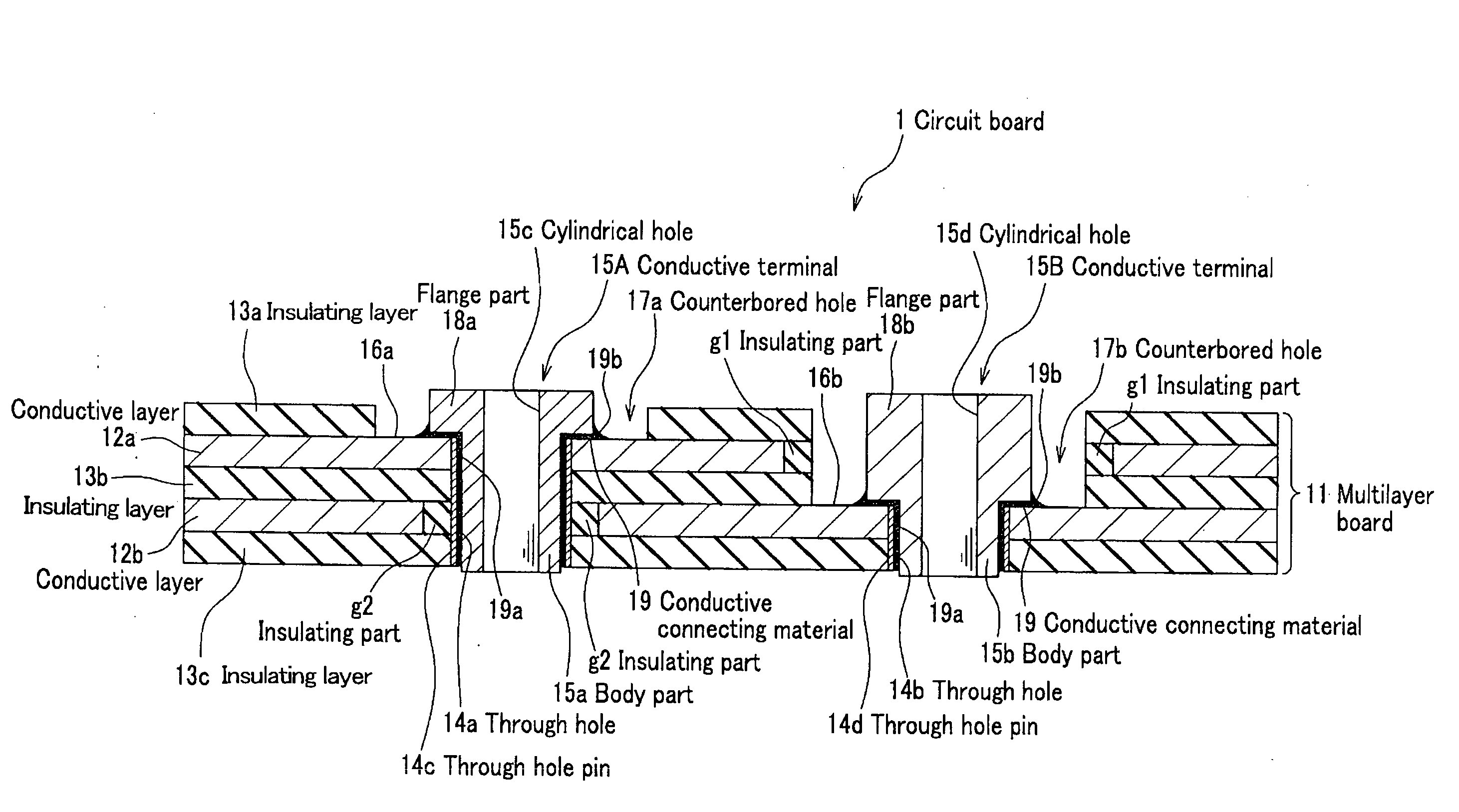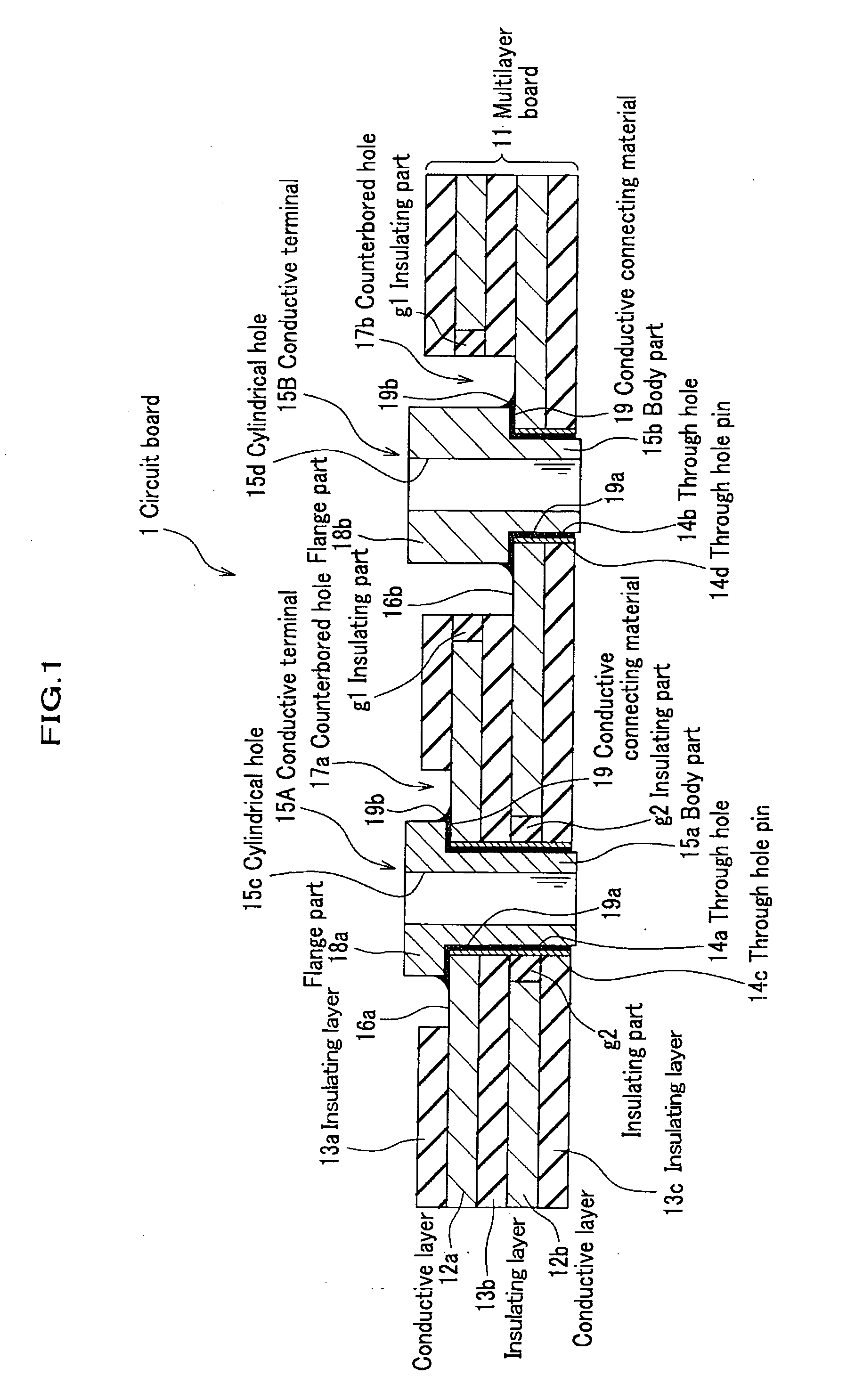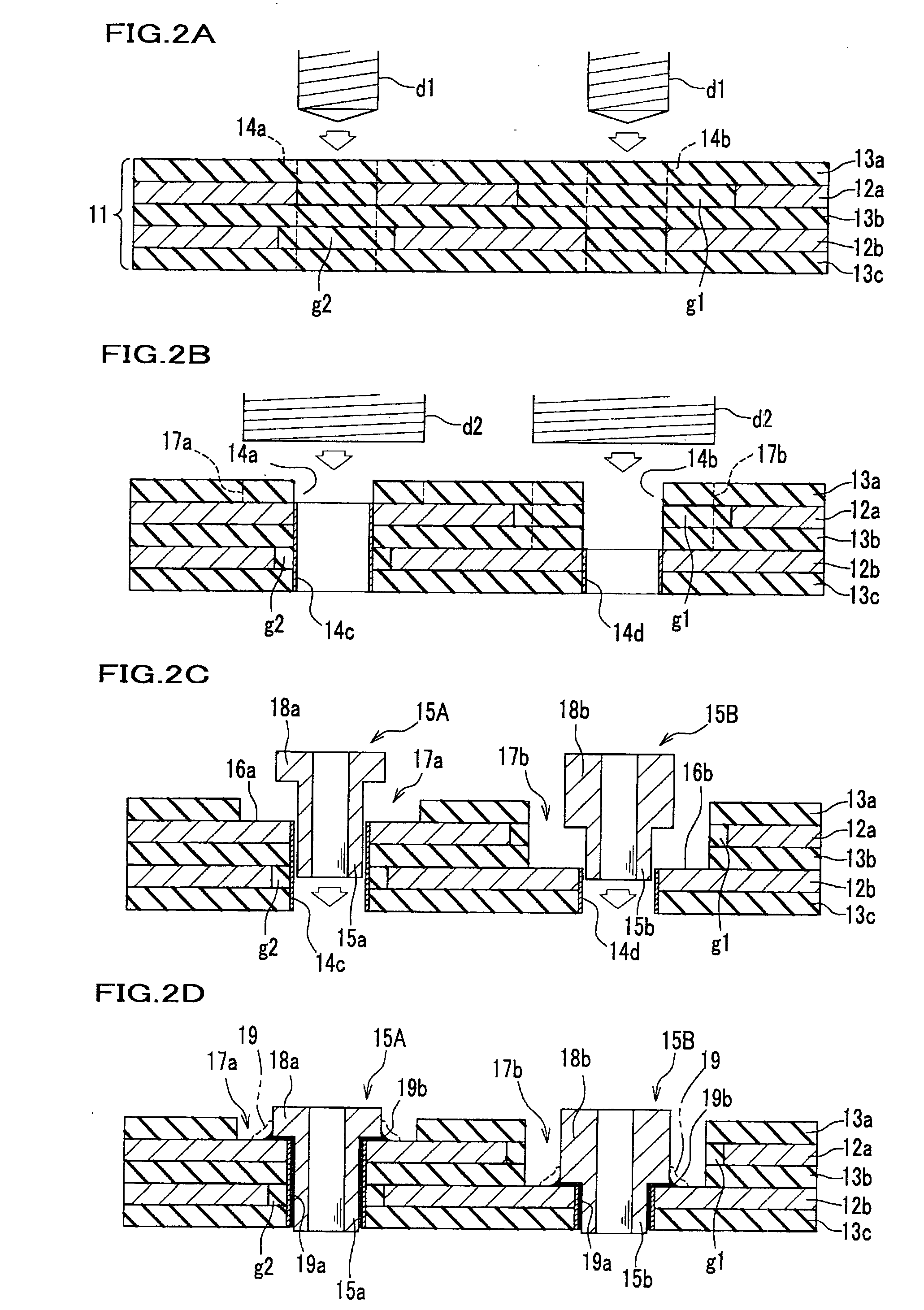Circuit board and method of manufacturing the same
a technology of circuit boards and components, applied in the direction of coupling contact members, coupling device connections, coupling protective earth/shielding arrangements, etc., can solve the problems of increasing the complexity of the manufacturing process, the inability to place other components in time, and the inability to manufacture the sam
- Summary
- Abstract
- Description
- Claims
- Application Information
AI Technical Summary
Benefits of technology
Problems solved by technology
Method used
Image
Examples
first embodiment
[0030] As shown in FIG. 1, the circuit board 1 includes a multilayer board 11, conductive terminals 15A,15B, and through hole pins 14c,14d.
[0031] The multilayer board 11 is formed by alternately stacking insulating layers 13a,13b,13c and conductive layers 12a,12b. The insulating layers 13a,13b,13c are thin layers made of insulating material such as glass epoxy resin. The conductive layers 12a,12b are thin layers made of copper, for example, and have predetermined circuit patterns therein.
[0032] The insulating layers 13a,13b,13c and the conductive layers 12a,12b have each suitable thickness according to material thereof, a magnitude of a current which is to flow through the conductive layers 12a,12b, and a size of the circuit board 1.
[0033] The multilayer board 11 has cylindrical through holes 14a,14b, which penetrate the multilayer board 11 at predetermined positions thereof; and counterbored holes (cylindrical recesses) 17a,17b to be described later, which penetrate the insulati...
second embodiment
[0062] Next is described a second embodiment with reference to FIG. 5A to FIG. 5D. FIG. 5A to FIG. 5D are sequential cross sectional views showing a first step to a fifth step as key steps in the method of manufacturing a circuit board. A configuration of the second embodiment is the same as that of the first embodiment shown in FIG. 1, except that the number of layers stacked in the circuit board is different, and that a pair of counterbored holes are formed on both an upper surface and a lower surface of the circuit board. Descriptions of a configuration and a process which have been already mentioned in the first embodiment will be omitted herefrom.
[0063] As shown in FIG. 5C and FIG. 5D, a circuit board 2 according to the second embodiment includes: a multilayer board 21, through hole pins 24c,24d, and conductive terminals 32A,32B, latter two of which are placed in the multilayer board 21.
[0064] The multilayer board 21 is configured such that insulating layers 23a,23b,23c,23d,2...
third embodiment
[0080] Next are described a circuit board and key steps of a method of manufacturing the circuit board according to a third embodiment with reference to FIG. 6A, FIG. 6B and FIG. 6C. FIG. 6A, FIG. 6B and FIG. 6C are sequential cross sectional views each showing a key step of the method of manufacturing the circuit board according to the third embodiment.
[0081] A configuration of the third embodiment is the same as that of the embodiments described above, except that no through hole pin is used, and that second flange parts are provided in the third embodiment. Difference between the third and the other embodiments is mainly described herein, and description of same configurations is omitted herefrom.
[0082] As shown in FIG. 6A, FIG. 6B and FIG. 6C, a circuit board 3 includes a multilayer board 41; first counterbored holes 47a,47b and second counterbored holes 49a,49b each formed concentric with through holes 44a,44b, respectively, the through holes 44a,44b penetrating the multilaye...
PUM
| Property | Measurement | Unit |
|---|---|---|
| Electrical conductor | aaaaa | aaaaa |
| Weight | aaaaa | aaaaa |
Abstract
Description
Claims
Application Information
 Login to View More
Login to View More - R&D
- Intellectual Property
- Life Sciences
- Materials
- Tech Scout
- Unparalleled Data Quality
- Higher Quality Content
- 60% Fewer Hallucinations
Browse by: Latest US Patents, China's latest patents, Technical Efficacy Thesaurus, Application Domain, Technology Topic, Popular Technical Reports.
© 2025 PatSnap. All rights reserved.Legal|Privacy policy|Modern Slavery Act Transparency Statement|Sitemap|About US| Contact US: help@patsnap.com



